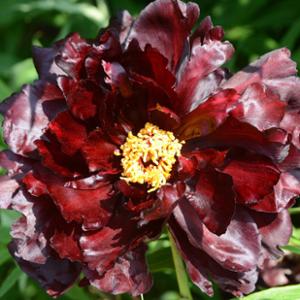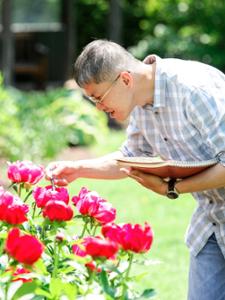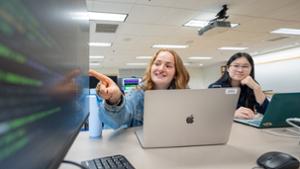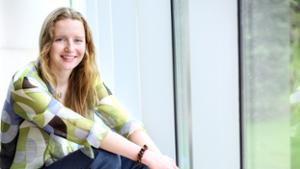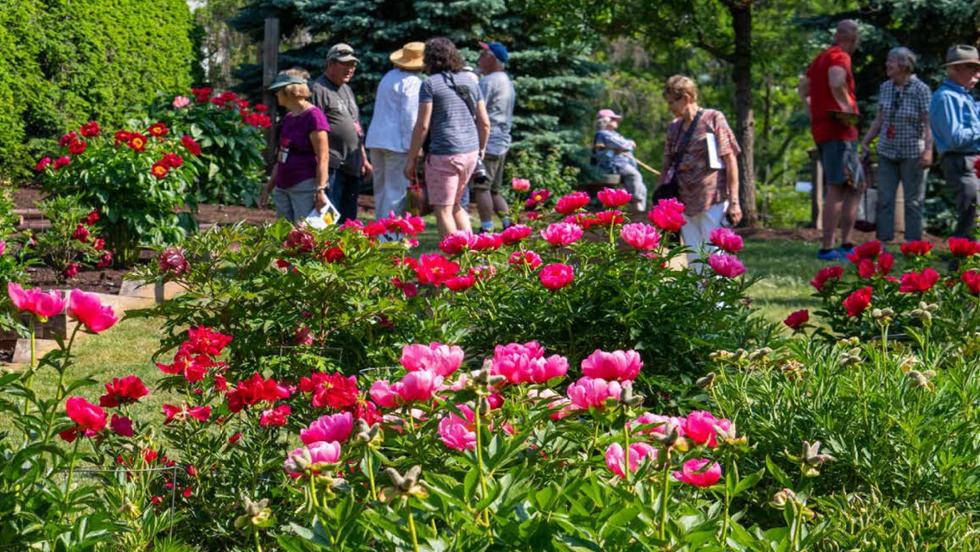

The mysterious blossoms were created in the 20th century by chemistry professor and master hybridist Arthur Percy Saunders. But Saunders left behind scant documentation of what species he used to create his world-renowned hybrids. So, John “JP” Hoak ’27, Mark Khairallah ’27, and Biology Professor Wei-Jen Chang are sleuthing for clues not in records, but in DNA.
The crew’s investigation began in April with harvesting peony leaves. “We have to get the leaves early to get the most concentrated DNA,” Hoak said. “We extract the DNA, purify it, select different primers for the target regions, digesting, ligating, and then sending it out to get sequenced. From that, we get a genetic code.”
Khairallah explained, “We’re essentially comparing and contrasting these different peony cultivars against each other and against generally well-known peony breeds through their genetic codes to try and figure out their genetic relationships to each other, as well as to the wider web of peony cultivars.”
So far, Chang’s lab has sequenced 15 peony cultivars over two summers of work. Two high school students from nearby New Hartford have taken up the mantle for the remainder of the summer, and Hoak and Khairallah expressed enthusiasm about returning to the project in the fall.
“About 100 years ago, Saunders created these peonies by classic hybridization, where you pollinate by brushes. [Today] we can use genetic methods to show how he did it.”
Through their participation, the students gained valuable experience learning common laboratory procedures and exploring bioinformatics, the analysis of biological data sets utilizing skills from computer science, biology, chemistry, and other sciences. However, the lab group emphasized the importance of the project from the perspective of heritage and preservation of knowledge.
The A.P. Saunders Peonies
These stunning peonies bloom each spring in Hamilton’s Grant Garden thanks to the hybridization talents of Arthur Percy Saunders, dean and professor of chemistry in the decades prior to World War II.
“This is a humanities science project,” Khairallah said. “People come from around the world to our peony garden. I was taking a walk through it the other day, and you could hear people talking, wondering, ‘How do you think they got this peony? Is there a way for us to do this?’”
Professor Chang added, “The peonies are tied back to part of our history. About 100 years ago, Saunders created these peonies by classic hybridization, where you pollinate by brushes. [Today] we can use genetic methods to show how he did it. Wouldn’t that be cool — to prove or disprove what he documented before the time I retire? I’ll feel that something I learned does contribute to the College.”
Through their efforts this summer, Khairallah, Hoak, and Chang are ever closer to uncovering the origins of Saunders’ iconic peonies. Learning the genetic history and relationships of these beautiful blossoms will promote appreciation and better preservation for these living artifacts of Hamilton heritage.
Posted July 15, 2025
